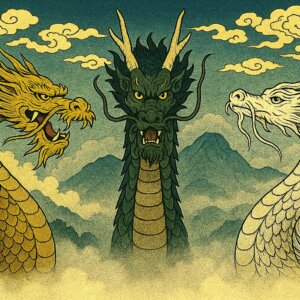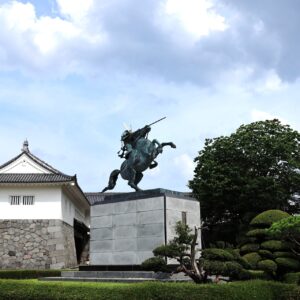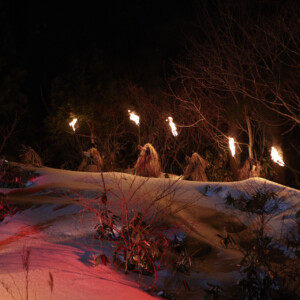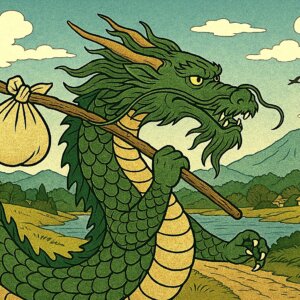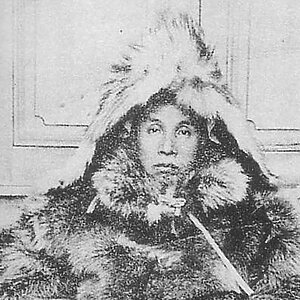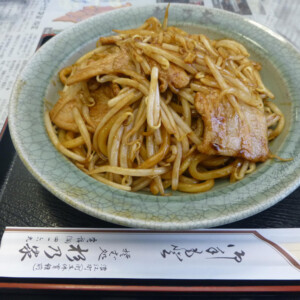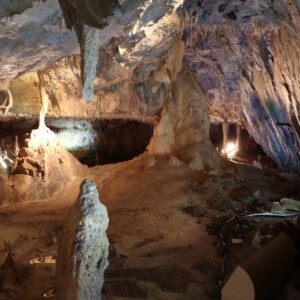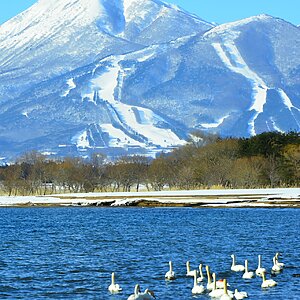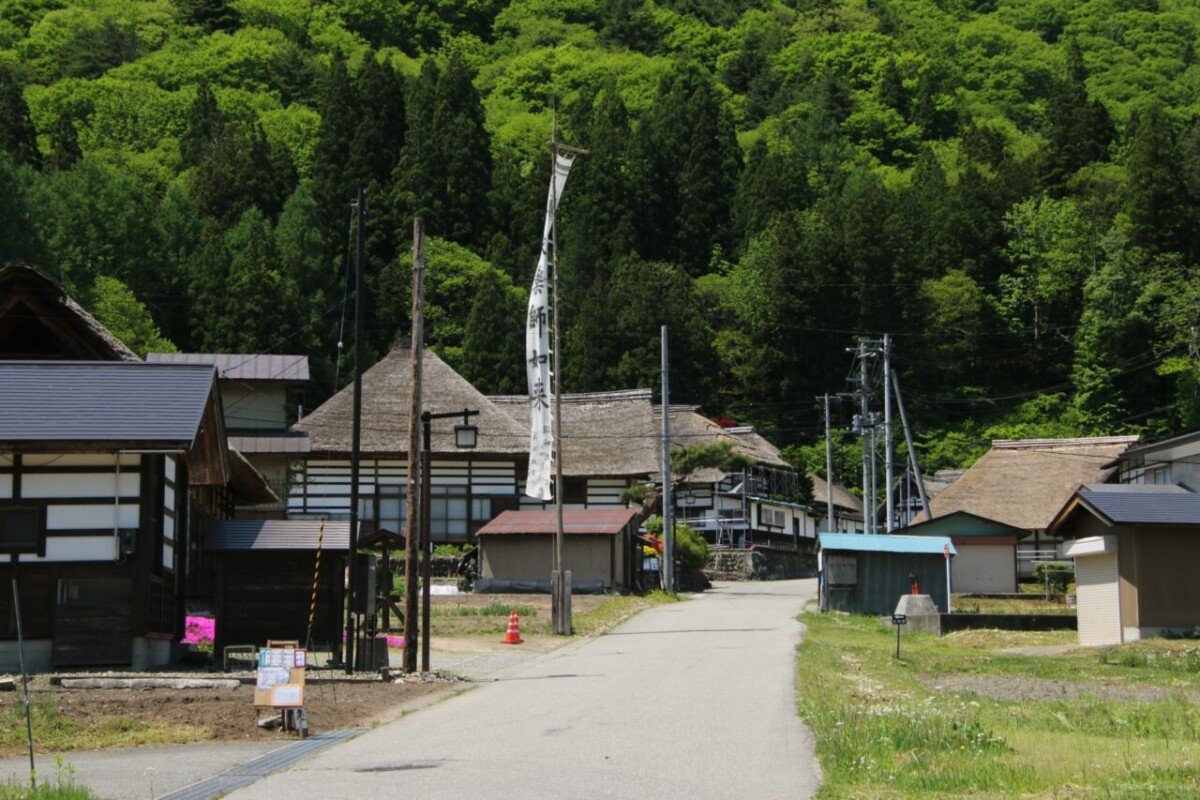
Maezawa Koya Village, a Japanese original landscape that remains with many traditional "masters" [Minamiaizu Town, Fukushima Prefecture]
table of contents
- 1 Living in the same house as horses: the Aizu lifestyle
- 2 A curved house where the whole house is warmed by the hearth and kept comfortable even in the cold winter
- 3 Over 100 remaining kagaya houses in the Aizu region
- 4 Maezawa Village, where 13 curved houses still remain
- 4.1 Maezawa Magariya Village, designated as a national preservation district for groups of traditional buildings
- 4.2 The Curved House Museum where you can see the structure of the curved house and the tools used in daily life
- 4.3 Sobadokoro Magariya: Enjoy the local specialty, handmade soba noodles
- 4.4 Take a break during your stroll at "Kominka Cafe Irori"
- 5 Mizuhiki Village: Beautiful, tranquil mountain village scenery
Minamiaizu Town in Fukushima Prefecture is known as "magariya," which have thatched roofs and L-shaped main buildings . Among these, 13 such houses are concentrated in the Maesawa settlement.
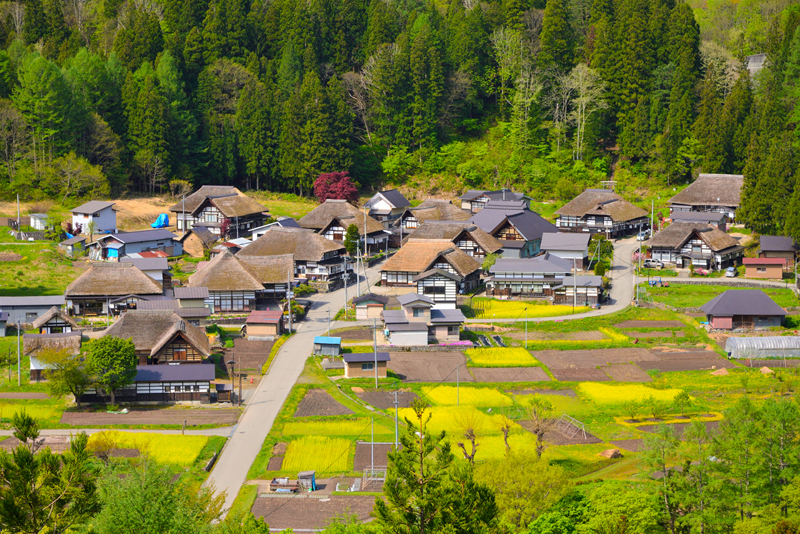
Living in the same house as horses: the Aizu lifestyle
Maezawa Magariya Village is located in the former Tateiwa Village (now Minamiaizu Town) in the Aizu region of Fukushima Prefecture. This area is a plateau, and its main tourist attraction is now a ski resort. It is an area with severe cold and deep snow in the winter.
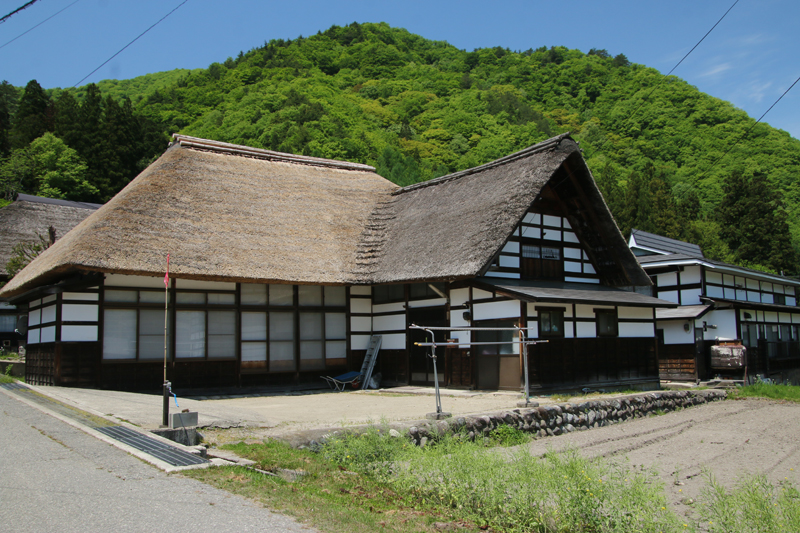
The term "Kagaya" may be called slightly differently depending on the region, but it is a typical Japanese farmhouse style and was common throughout Japan, especially in eastern Japan, from the Edo to Meiji periods .
In the days before powered agricultural machinery such as combine harvesters, cows and horses were very useful for farm work, and in warm regions, livestock sheds were built separately from the main house
However, in cold regions, outdoor livestock sheds are cold, and people have to leave the house to care for their horses, which creates many inconveniences. This led to the idea of a farmhouse where the main house is connected to the livestock shed .
A curved house where the whole house is warmed by the hearth and kept comfortable even in the cold winter
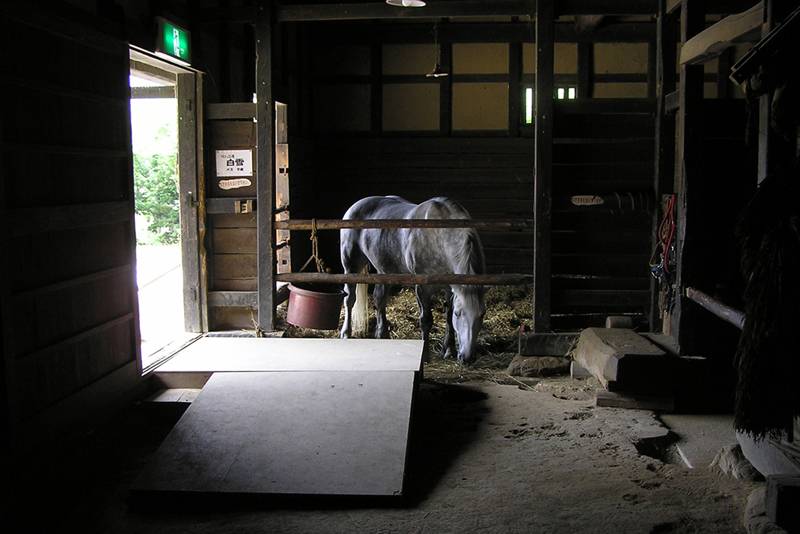
In eastern Japan, including Aizu, horses were kept for farming and transportation. The easiest way to build a stable (uma-ya) next to the main house is to use a flat surface (sugoya), but in the Aizu region, most stables are curved
It is not clear why they chose to build curved houses, but in houses with thatched roofs, a fire was kept lit in the hearth all day to dry the roof, which kept the living space and the stables in the same building warm and comfortable
Over 100 remaining kagaya houses in the Aizu region
As agriculture became increasingly mechanized, the need to raise horses for farming disappeared, and roofing materials were replaced with semi-permanent tiles and iron sheets, so this traditional farmhouse architecture has almost completely disappeared. However, in the Aizu region alone, more than 100 kagaya houses remain. Of course, horses are no longer kept in these houses, but they are a valuable cultural heritage that gives us an insight into life in the past.
Maezawa Village, where 13 curved houses still remain

Maesawa village is a small settlement of around 20 houses, of which 13 are curved houses. Of these 13, 10 have thatched roofs (3 have had their roofs re-thatched), and the buildings remain as they were when they were used together with the stables, with the stables being remodeled in various ways and still used as residences today
The Maesawa settlement dates back to the 1590s during the Azuchi-Momoyama period, and the settlement is home to the Batou Kannon and Marikishin deities, which show how much people valued horses
In 1907 (Meiji 40), a major fire destroyed all buildings except for the four storehouses. The residents, who had lost their homes, spent three years rebuilding all the houses to their original appearance with the help of people from the surrounding area, and the Magariya Village that exists today was born
Eventually, the era of horses came to an end, and in the 1960s, when the rebuilding of the curved houses was being considered, the idea of the local people and the former Tateiwa village to preserve the original Japanese landscape came to fruition, and the houses were preserved almost exactly as they were, and the entire village was opened to the public as "Maezawa Curved House Village."
Maezawa Magariya Village, designated as a national preservation district for groups of traditional buildings
Maezawa Curved House Village is not a tourist facility, but a village that is actually used as a place of daily life. Although you cannot visit the houses, there are walking paths, and the Maezawa Curved House Museum, which displays traditional folk tools and materials in old-fashioned curved houses, as well as a soba restaurant and cafe.
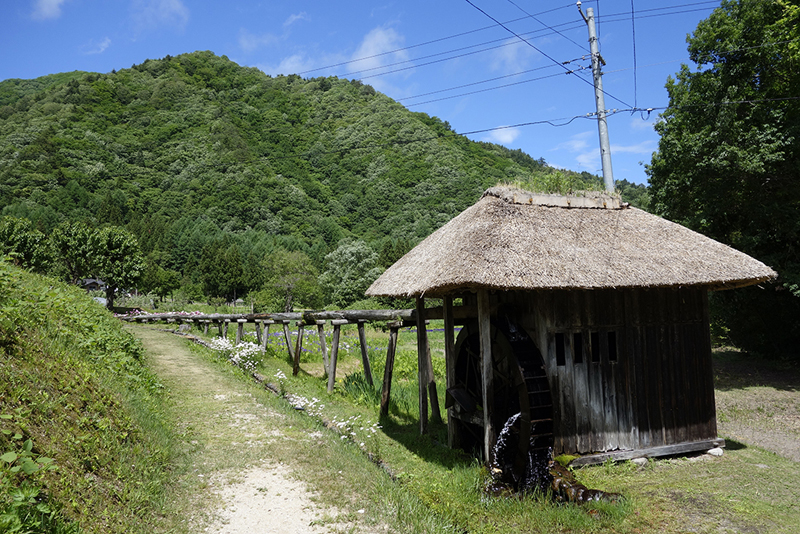
The village is dotted with stone statues of Bato Kannon and Umajiki, as well as storehouses that survived the great fire of 1907, thatched-roof watermills, shrines, and Yakushido temples, creating a tranquil landscape that evokes the original rural landscape. The entire village can be seen from a hill a short distance away
Maezawa Magariya Village is designated as a national preservation district for groups of traditional buildings
Maezawa Magariya Village <Information>
- Name: Maezawa Kakeru Village
- Address: Maesawa, Minamiaizu-machi, Minamiaizu-gun, Fukushima Prefecture
- Phone number: 0241-72-8977 (Maezawa Landscape Preservation Society)
- Tour period: April to November
- Tour times: 8:30-16:30
- Admission fee: Adults 300 yen, high school students and younger 150 yen (free for preschoolers and townspeople)
- Official URL: Maezawa Magariya Village Homepage
Google Map
The Curved House Museum where you can see the structure of the curved house and the tools used in daily life
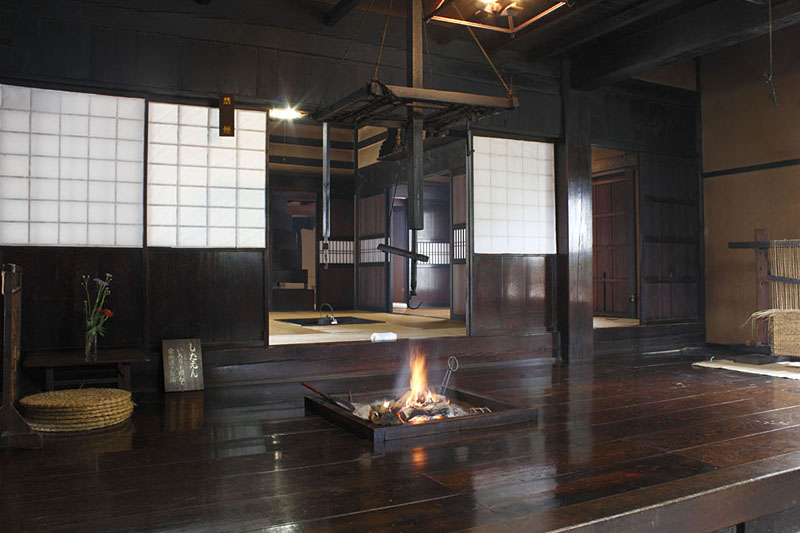
The Curved House Museum was relocated from the neighboring former village of Inamura (now Minamiaizu Town) to preserve and display the curved houses of the Aizu region. The architectural style is the same as that of Maesawa Village, and it was built in the late Meiji period
The museum displays everyday items and allows visitors to tour the building. The Buddhist statues enshrined in the back room are the "Standing Statue of Acala and Two Children," designated tangible cultural properties by Minamiaizu Town. The curved house, which is centered around a living room with a hearth, allows visitors to keep an eye on their horses from the comfort of their own home, demonstrating the wisdom of living in a snowy country where people live with horses. The Curved House Museum is the only place in Maezawa Curved House Village where you can tour the inside of a curved house
Musician Museum <Information>
- Facility name: Kyoka Museum
- Opening period: April to November
- Admission fee: Free
Google Map
Sobadokoro Magariya: Enjoy the local specialty, handmade soba noodles
Soba Restaurant Magariya is a soba restaurant operating out of a curved house in Maesawa village. The L-shaped stable area has been converted into the entrance. You can enjoy handmade soba noodles made with buckwheat flour, a specialty of the Tateiwa area, including Maesawa village
Soba Restaurant Kyoka <Information>
- Facility name: Soba restaurant Magaya
- Opening period: April to November
- Business hours: 10:30-16:00
- Official URL: https://tateiwa-nousan.jp/magariya.html
Google Map
Take a break during your stroll at "Kominka Cafe Irori"
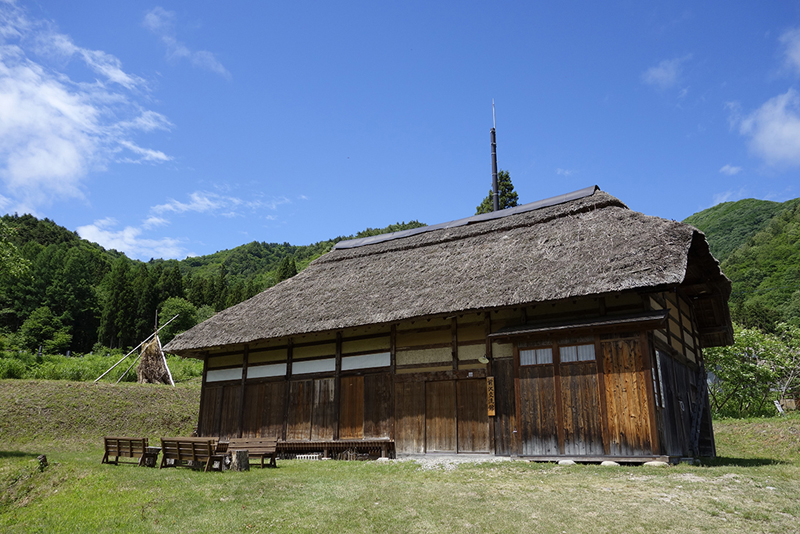
"Kominka Cafe Irori" is a cafe that occupies an abandoned thatched-roof house in the village, and is a great place to stop by during a stroll. There is also a direct sales store selling local specialties and traditional crafts
Traditional Japanese House Cafe Irori <Information>
- Facility name: Old-style house cafe Irori
- Opening period: April to November
- Business days: Saturday, Sunday, Monday, and public holidays
- Business hours: 10:00-15:00
Google Map
Mizuhiki Village: Beautiful, tranquil mountain village scenery
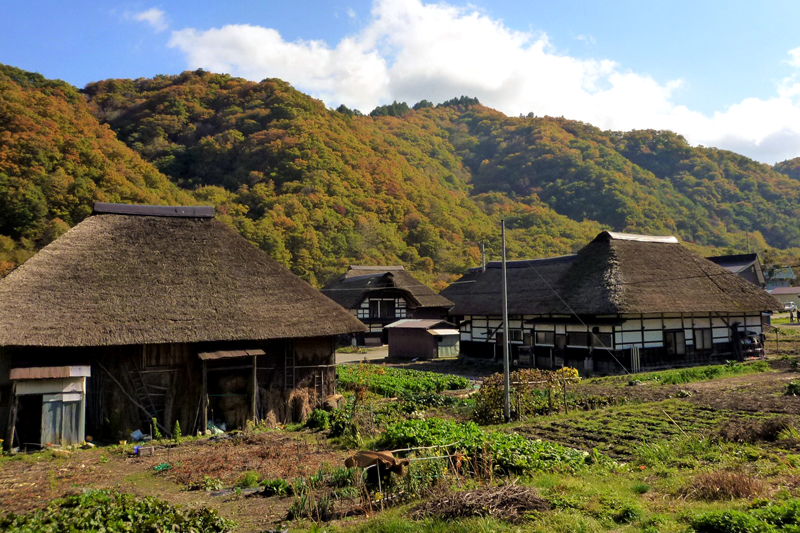
Mizuhiki Village is a village with seven curved houses remaining. During the Meiji period, it was hit by a great fire and all the houses were burned down, but were later rebuilt
A leisurely stroll through the traditional mountain village scenery
The village does not have any tourist facilities such as restaurants or souvenir shops, but there are guide signs and you can take a leisurely stroll through the traditional mountain village scenery. Unlike the tourist-oriented "Maezawa Magariya Village," this is a place where people still live, so please be considerate and respectful of the residents when strolling.
Mizuhiki Village <Information>
- Name: Mizuhiki village
- Address: Mizuhiki, Minamiaizu-machi, Fukushima Prefecture
- For inquiries, please contact: Minamiaizu Town Tourism and Products Association, Tateiwa Tourist Center
- Phone number: 0241-64-5611
- Free to stroll around ※This is not a tourist facility
- URL: Aizu Tourism Homepage



![A tour of precious cultural assets that remain in Minami Aizu, the southern part of the Aizu region [Fukushima Prefecture] 002402574](https://jp.neft.asia/wp-content/uploads/2022/11/002402574-150x150.jpg)
![[Fukushima City, Fukushima Prefecture] Fukushima Prefecture’s cultural asset “Fukushima Civic House Garden” that should be preserved for future generations 8c11851463ddede5f0cfc680bb3adce6](https://jp.neft.asia/wp-content/uploads/2022/05/8c11851463ddede5f0cfc680bb3adce6-150x150.jpg)
![Nanbu Bevelers are the unique residence of the Nanbu Domain, who was well aware of the importance of horses [Iwate Prefecture] 1906769_m](https://jp.neft.asia/wp-content/uploads/2022/06/1906769_m-150x150.jpg)
![The history of Kamiyama, which developed as a castle town and post town with hot springs [Kamiyama City, Yamagata Prefecture] Kaminoyama Castle](https://jp.neft.asia/wp-content/uploads/2023/08/22726859_m-150x150.jpg)
!["Place names with 'To' in them" from 1 to 9 [Shichinohe Edition] The northernmost To, where the image of a horse breeding area remains strong Shichinohe Catch](https://jp.neft.asia/wp-content/uploads/2024/07/286d15017199ce278766930f20fcf2e8-150x150.jpg)
![The Aizu Tajima Gion Festival is famous for Japan's number one bride line [Minami Aizu Town, Fukushima Prefecture] Aizu Tajima Gion Festival](https://jp.neft.asia/wp-content/uploads/2022/10/1_ccc5e365-9269-483b-b9a4-f53bf9d88c81-x2.jpg-150x150.webp)
![[Aizu Tajima Gion Festival Photo Report: Part 1] Kabuki Kabuki performances at the Great Hoods of the Night Festival [Minami Aizu Town, Fukushima Prefecture] 2025.07.22 Aizu Tajima Gion Festival_00](https://jp.neft.asia/wp-content/uploads/2025/07/PXL_20250722_105121018-150x150.jpg)
![[Aizu Tajima Gion Festival Photo Report: Part 2] Seven-lined procession, also known as Japan's number one bride procession [Minami Aizu Town, Fukushima Prefecture] 2025.07.22 Aizu Tajima Gion Festival_Japan's No. 1 Bride Procession](https://jp.neft.asia/wp-content/uploads/2025/07/IMG_38592-150x150.jpg)
